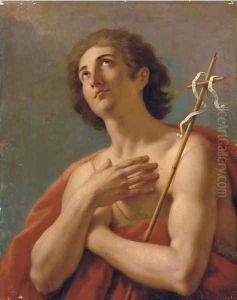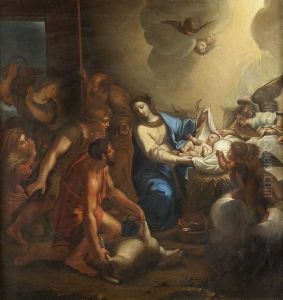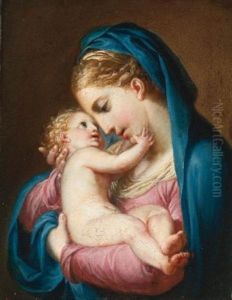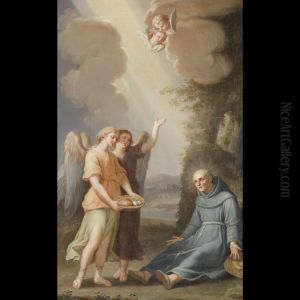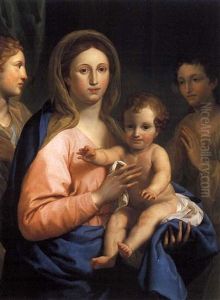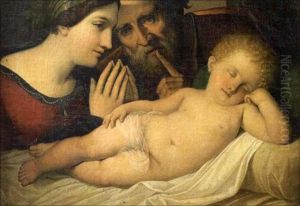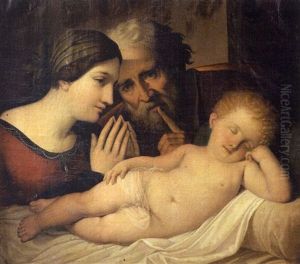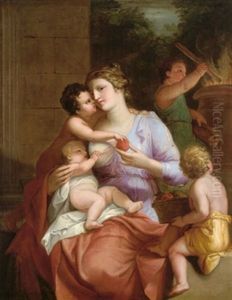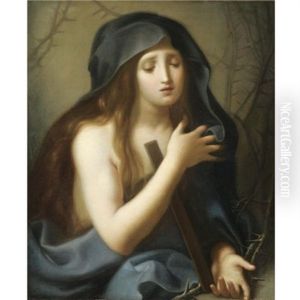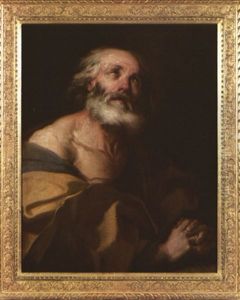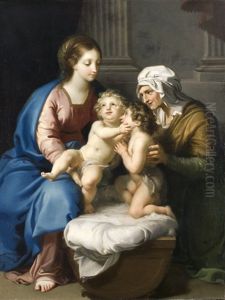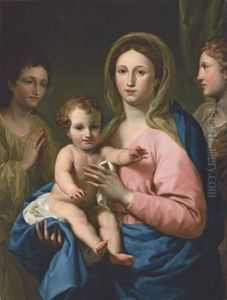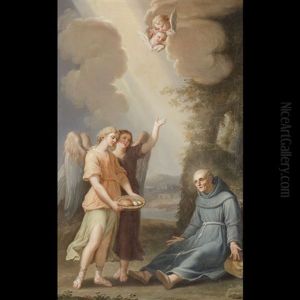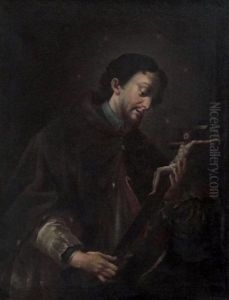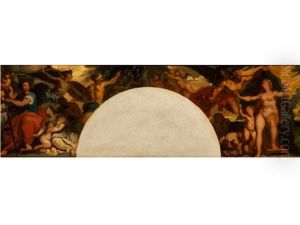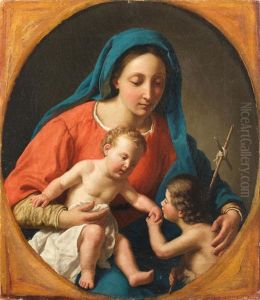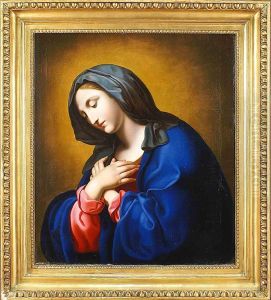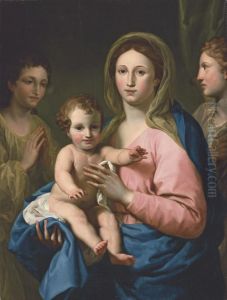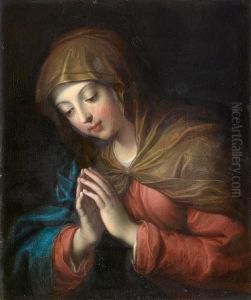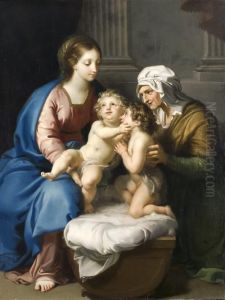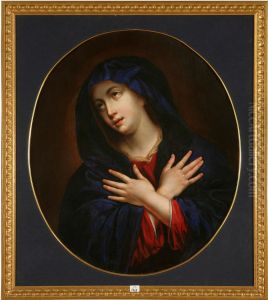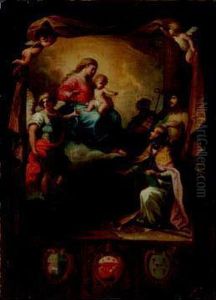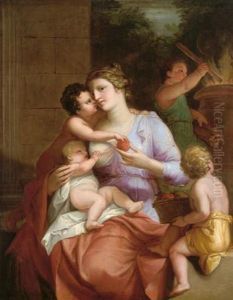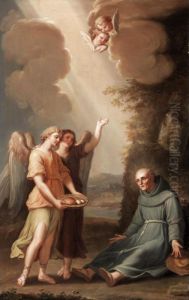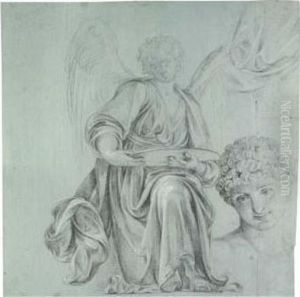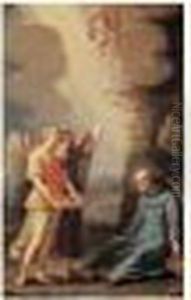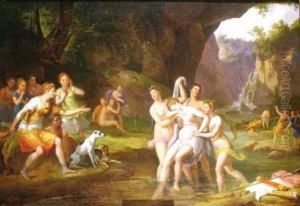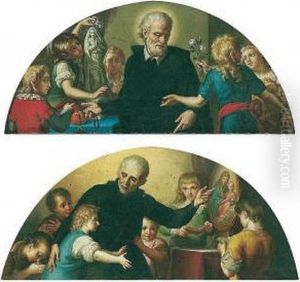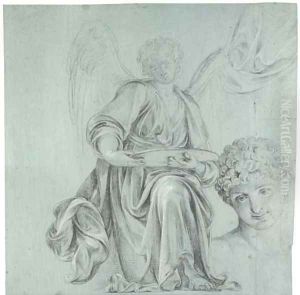Antonio Cavallucci Paintings
Antonio Cavallucci was an Italian painter of the late Baroque and early Neoclassical periods, born in 1752 in Sermoneta, near Rome. His artistic journey began under the guidance of his father, who was also a painter. However, it was his studies at the Accademia di San Luca in Rome that truly shaped his career and style. Cavallucci's work is characterized by its emotional depth and the use of light, which shows the influence of the Baroque, yet his themes and some stylistic choices also reflect the emerging Neoclassical spirit of his time.
Cavallucci's talent was recognized early in his career, and he gained the patronage of Cardinal Francesco Saverio de Zelada, among others. This support allowed him to work on various religious and mythological subjects, creating altarpieces, frescoes, and smaller devotional images that were acclaimed for their expressive intensity and technical skill. His most notable works include 'The Supper at Emmaus', 'The Death of Socrates', and 'The Virgin and Child with Saints'.
Despite his success, Antonio Cavallucci's life was marked by personal challenges and his health was fragile. He remained relatively insular, focusing on his work rather than seeking widespread fame, which might explain why his name is not as widely recognized as some of his contemporaries. Cavallucci's career was cut short when he died in 1795, at the age of 43, in Rome. After his death, his reputation continued to grow, especially in the regions around Rome, where his artworks were particularly venerated.
Today, Antonio Cavallucci is remembered for his contribution to the transition between Baroque and Neoclassicism in Italian art. His works are celebrated for their emotional expressiveness and technical prowess, offering a glimpse into the changing artistic landscapes of late 18th century Italy.
